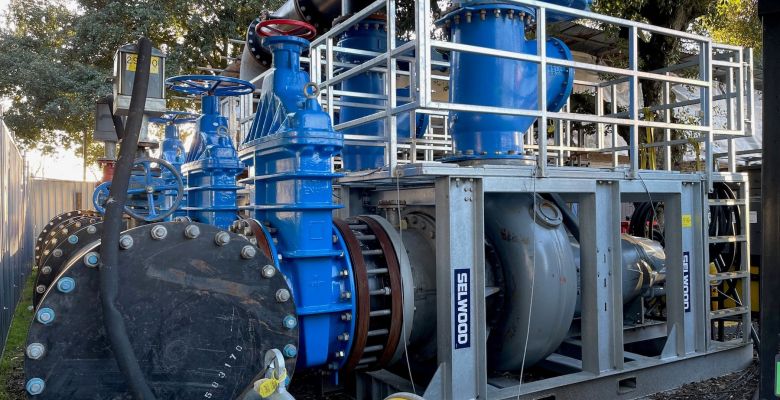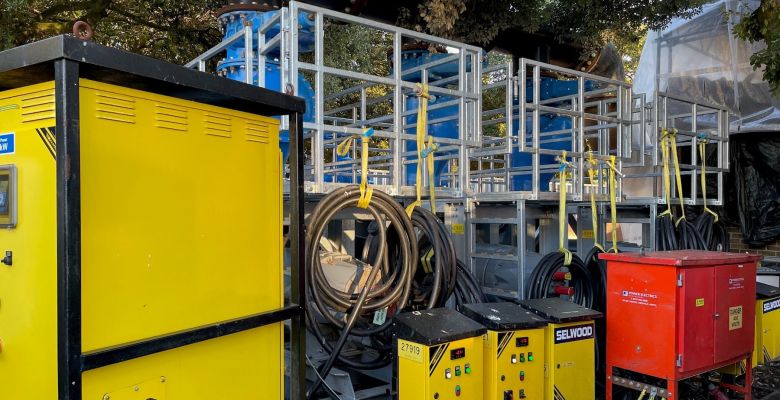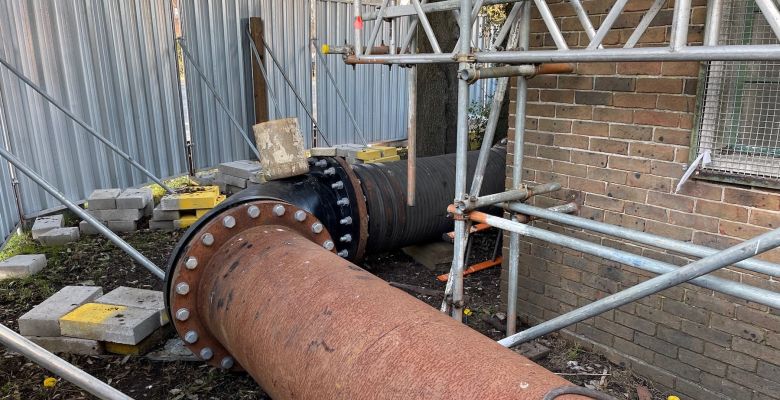The background
Southern Water called for Selwood’s expert help during works at a pumping station that had been the site of a number of ongoing issues. The station, which handled flows of 2,500 litres per second, had previously suffered pump failure causing flooding to local basement homes, for which Selwood provided emergency support.
To avoid any issues in the future, and to enable maintenance of the pumps, Selwood were tasked with carrying out an over pumping operation.
The challenge
A thorough site survey highlighted several challenges. These included the volume of water to be redirected, the cramped size of the site and the limited options for access.
The initial proposed solution was to use four diesel-powered pumps, all working in a duty and assist format, which left little resilience in the event of a pump failure along with blocking access for maintenance.
Following the original site survey, a number of other issues were identified, including problems with power supplies and screens.
During the planning phase, two existing pumps failed, causing a loss of power to the site, and Selwood provided emergency over pumping to deal with the immediate issue.
The solution
As a stopgap solution, Selwood brought in two newly acquired Hidrostal pumps set up in an NZ format. Due to the restricted access, the pipework had to be lowered into the well through a door, and the suction tube could not reach the bottom of the well.
After a second site survey, it was decided that the roof of the station would need to be removed. Three pumps were used along with a 1000mm diameter common suction line which could reach the bottom of the well. To maintain access to the front doors, the discharge was routed around the back.
While the installation was being carried out, Selwood’s specialists were asked if the pump system could be adapted to run from the site’s 800A power supply with backup generators. Selwood came up with a system that would automatically provide electrical backup for the pump system and Southern Water’s telemetry. Two 500kva generators were connected to the mains panel via an auto changeover and distribution board to feed the telemetry circuits.
Finally, Selwood followed up on a request to move the control signalling over to Southern Water’s systems so they were able to monitor the pumps on their own platform. This was something that is not normally required but was achieved by wiring and drive programming which was developed and tested to ensure correct operation.
The result
This was an extremely challenging and technical job with a number of difficulties to overcome.
However, thanks to the ingenuity and persistence of Selwood’s teams, the system proved itself to be very robust and more than adequate for the station.



